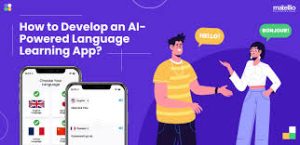Learn a new language using AI: AI Unlocks the World
Today, learning multiple languages is essential in a world that is increasingly interconnected. Artificial intelligence (AI) is transforming the way language learning takes place language used for ai programming, allowing both advanced and beginner learners to benefit from new possibilities. AI-powered apps and tools revolutionize the way we approach learning languages. They make it more efficient and personalized.

AI is able to offer personalized language learning. The standardized curriculum of traditional language classes makes it difficult to cater to individual student needs. AI-driven platforms are able to analyze the strengths and weaknesses of a student, as well as their learning pace. They can then offer customized lessons that focus on specific areas where improvement is needed. AI can, for instance, identify a person’s frequent grammar errors and customize exercises to target these issues. This will enhance the learning process.
AI technology also excels at creating immersive learning environments. AI applications are able to simulate real conversations between native speakers and users using speech recognition. These tools offer instant feedback regarding pronunciation, grammar and vocabulary usage. They allow learners to practice speaking within a safe, supportive environment. This type of interactive practice is important for building fluency and confidence, which are critical to language mastery.
AI is also a bridge that connects language learners to vast resources. Google Translate is one of many machine translation tools that use AI to improve accuracy. Although these tools aren’t perfect, they provide a great starting point for communication and understanding, allowing learners to access content in their native languages that might not otherwise be available. The quality of machine translation should improve as AI advances, creating new opportunities for multilingual communication.
AI can be used for linguistic research and to improve language patterns. AI is able to analyze large amounts of language data and uncover subtle trends and nuances, which can be used in developing teaching materials and courses.
AI does have its limitations despite all of these technological advances. AI is still unable to capture the human element, which includes cultural nuances and emotional contexts, as well as idiomatic expressions. Teachers and language specialists play an important role in interpreting, explaining, and delivering subtleties. This suggests that a hybrid approach, combining AI’s strengths with human expertise, could offer the best language learning solutions.
Conclusion: The integration of AI with language learning represents a significant step forward. It provides a tailored, interactive and resource-rich learning experience for students worldwide. As AI continues its evolution, it will probably expand the role of AI in language education, opening up doors to new linguistic perspectives and fostering global communication.
